Premise
I am a huge supporter of the concept of dry fire training, and have been for quite a while. Putting it into daily practice is another thing. And I have always wondered if there is actually measurable training value in it.
The biggest mental hangups I have with dry fire are related to training with items and techniques that are not how I would do things in a fight or competition. As an example, when practicing a draw stroke and trigger pull with my Glock 17 (no live ammo, thank you very much), I find that I am training myself to pull the trigger, but not be able to actuate the trigger reset, nor do a follow up shot. To do either of those, I would have to rack the slide, which is a behavior I would rather not imprint after every single shot.
The other thing that is lacking in dry fire, which is also the most important feedback that you get from live fire, is the actual end result of the shot that you took–where is the hole in the target? There is not really an easy way to get feedback indoors, without the use of a laser, especially not in a manner that you can easily measure.
My ideal setup would be a way to use any of my existing guns to basically shoot exactly how I would on a range, without the use of actual rounds. I would need something to run the action of the gun, and to project a dot exactly where a bullet would go. I think it is also important to get feedback on what your manipulations are doing to the gun–are you pushing, heeling, etc. Ideally, I would also like to keep the cost of the equipment to under a couple of cases of ammo.
If I could shoot one hundred rounds a day, five days a week, for a solid month I assert I would see an improvement in accuracy. That translates to around two thousand rounds, which, in 9mm, would be about $400. To consistently train this perishable skill you would need to be wealthy enough to afford the ammo (or work for someone that is), and have the disposable time to go to the range at that frequently. Both things are just not feasible for the average Joe (or Jane) that wants to improve their shooting, or train consistently.
Pipe dream, yes, I know…
Components
The four components I used during this training period are below.
Atlas 8
The Atlas8 is a dry fire training target that allows you to train anytime and anywhere. It is wireless (so it can link a number of units together) and can be used both indoors and outdoors.
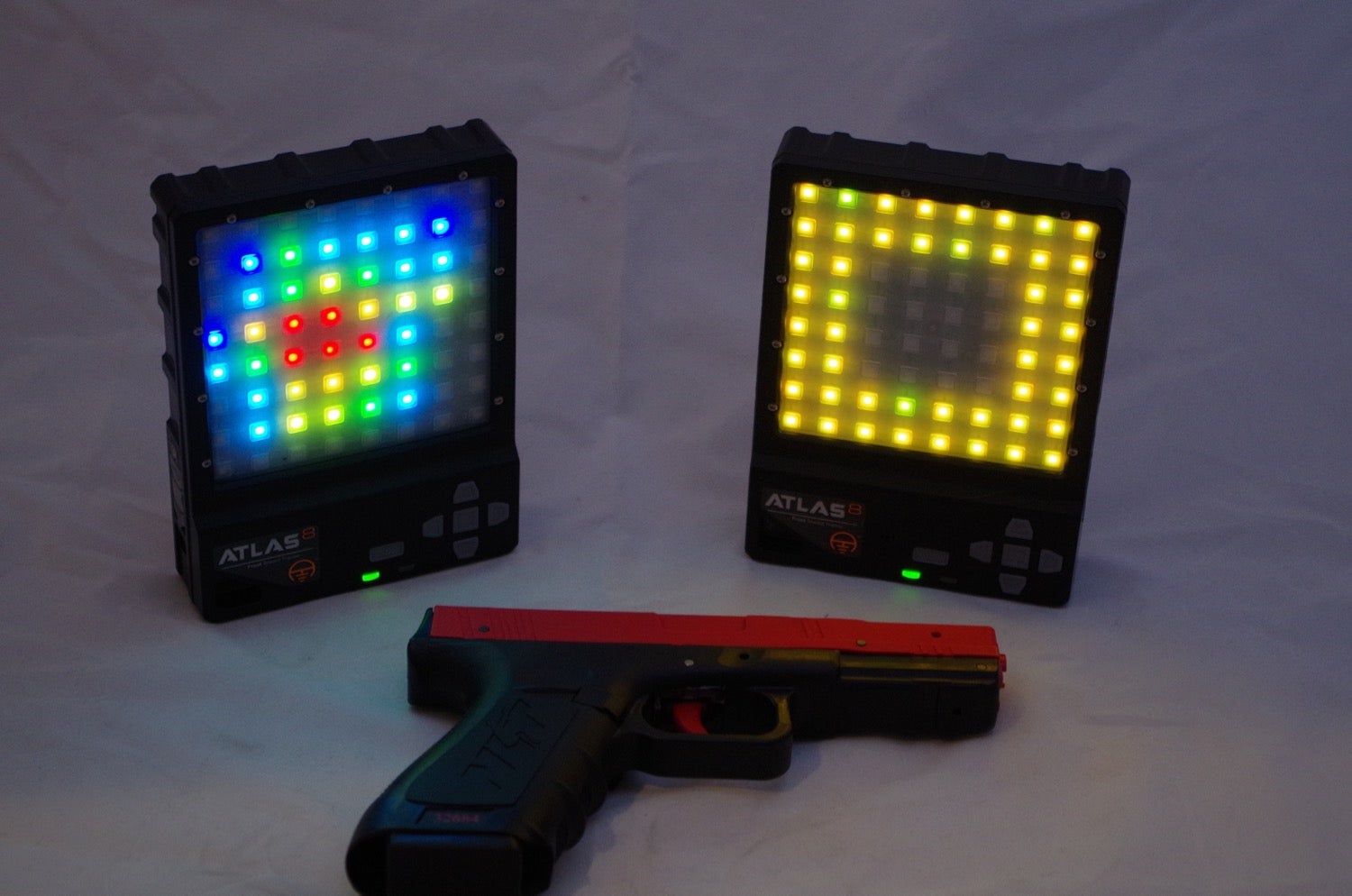
Two Atlas8 units with SIRT pistol.
http://www.thesaltedearth.com/portfolio-item/atlas-dry-fire-laser-training-target/
CoolFire
CoolFire is a patent-pending firearms training system that utilizes CO2 and an integrated laser to convert a standard pistol (your pistol) into an effective firearms training tool.
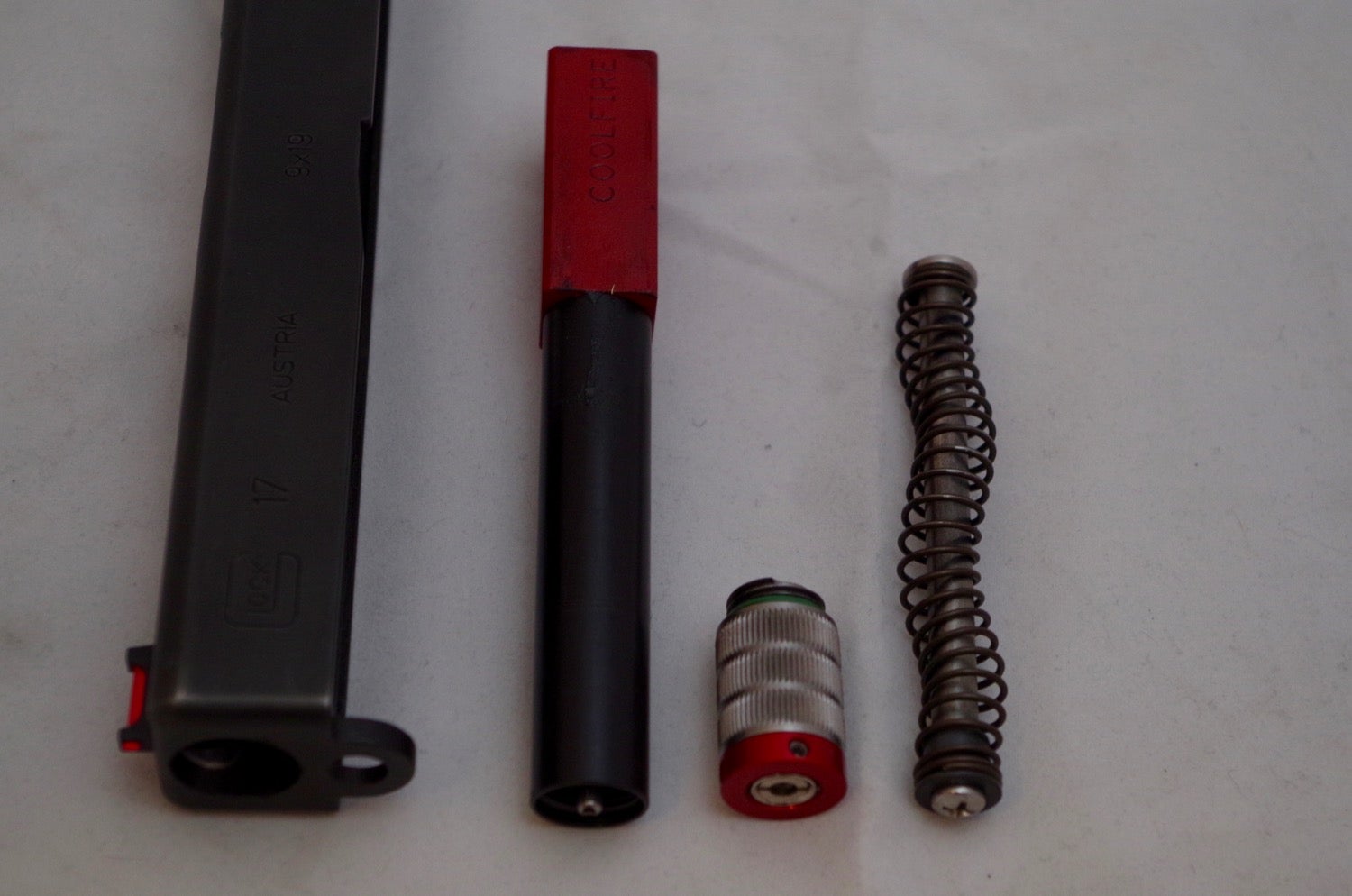
CoolFire components, basically a barrel replacement with spring, and a laser.
MantisX
MantisX is a patent-pending handgun attachment that helps firearms enthusiasts and professionals train more efficiently. While attached to a handgun, it analyzes every shot and generates actionable data you can use to improve your shooting mechanics.
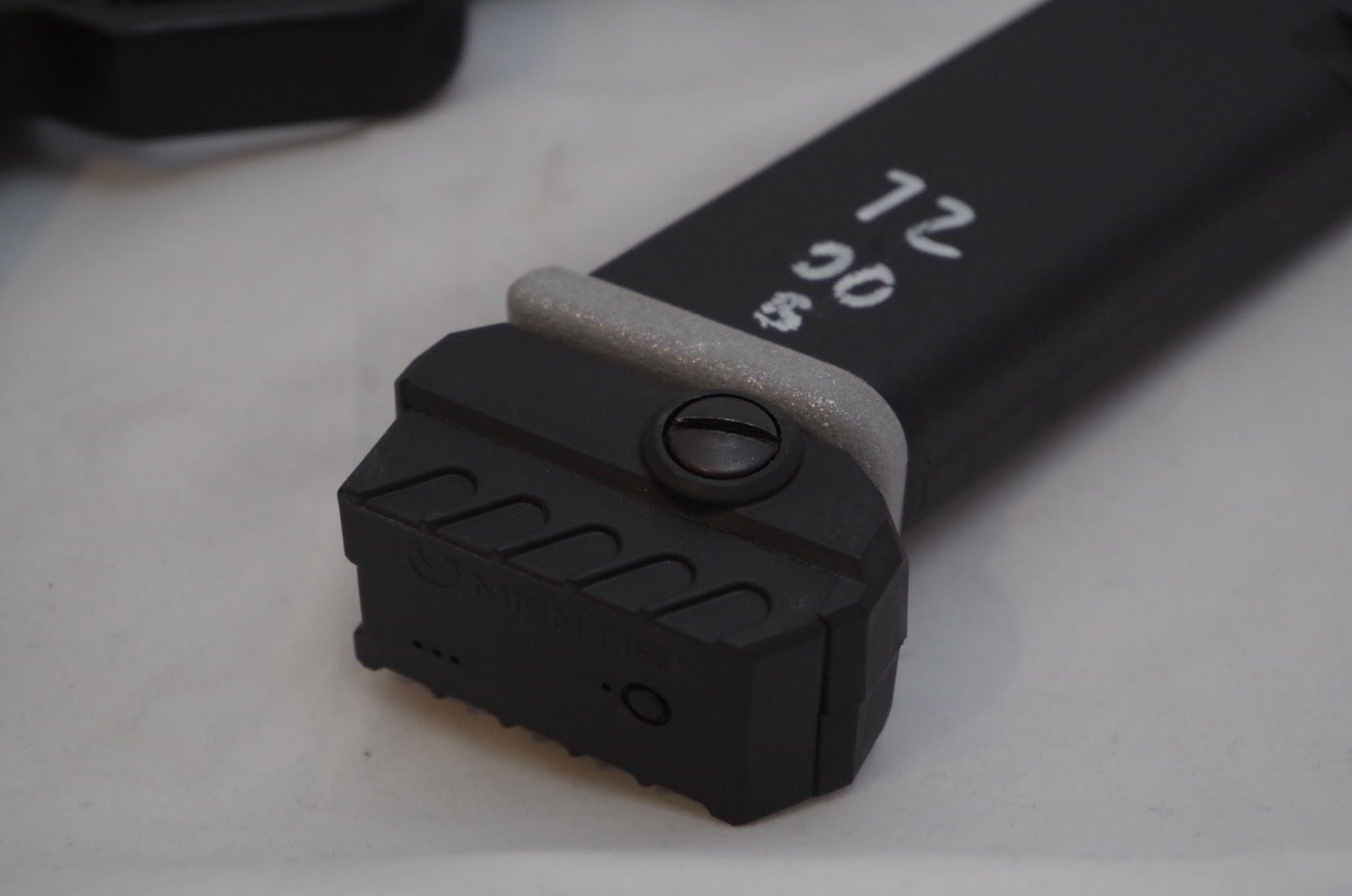
The MantisX in the magazine mount configuration (which ended up being the most accurate mount for my situation)
ShootOffApp
ShootOFF is free, open source software that enhances laser dry fire training by detecting your shots using a computer and a webcam. Process your shots as they happen with a training exercise to keep score, call out random targets, practice shoot-don’t-shoot drills, and much more.
Plan
The CoolFire Laser Training System is really the corner stone of my plan. Without having a way to reciprocate the slide (aside from manually racking it), I think ultimately there is the potential to engineer bad habits. Also, without something making the gun mechanically function, you cannot dry fire practice follow up shots.
From there I need a way to get immediate feedback as to what effect my manipulations are having. Am I introducing inaccuracy by bad mechanics? The MantisX fills that needs.
Finally I need a way to measure my shots and to get feedback on how they are doing, hopefully recording and scoring the data, so that I can measure improvement over time.
Baseline
The baseline drill that I shot was the Dot Torture Drill. I think it is a decent test of skill and accuracy, and it’s difficulty can be increased by distance and time pressure if needed.
I had considered other drills but ultimately chose this one, as it is a pretty good assessment of pistol handling and accuracy.
My pre-training shoot was freaking horrible. Ugly nasty horrible. But I will own it. I shot from the 5 yard line and was all over the place. At least I was mostly on the paper… :/
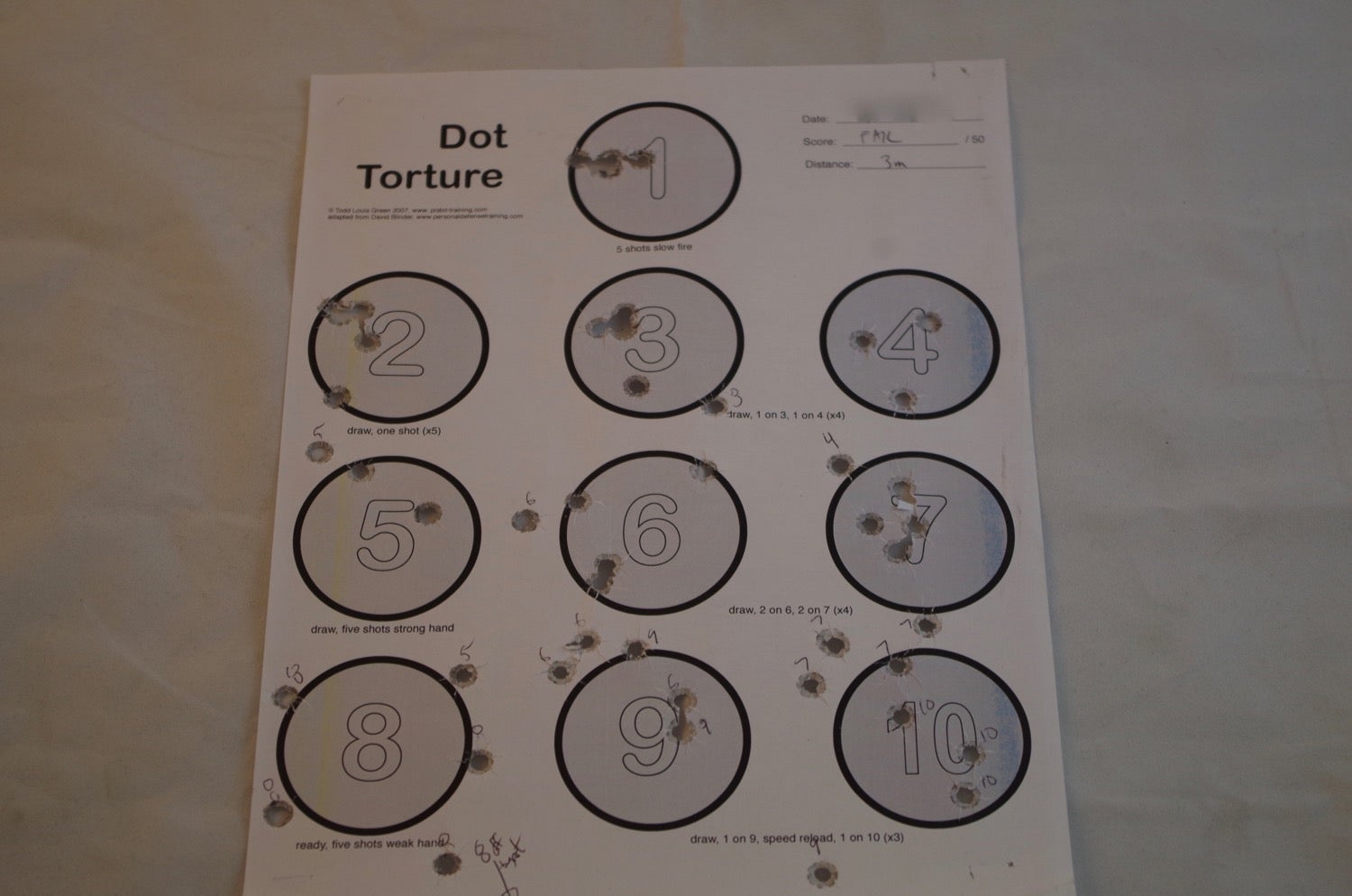
Seriously? At 3 yards? Well this is what I started with. I can only go up from here…
For reference, the Dot Torture Drill (which I found on Pistol-Training.com, who in turn credits Dave Blinder, who says that the originator of the drill is not known…):
- Dot 1 – Draw and fire one string of 5 rounds for best group. One hole if possible, total 5 rounds.
- Dot 2 – Draw and fire 1 shot, holster and repeat X4, total 5 rounds.
- Dots 3 & 4 – Draw and fire 1 shot on #3, then 1 shot on #4, holster and repeat X3, total 8 rounds.
- Dot 5 – Draw and fire string of 5 rounds, strong hand only, total 5 rounds.
- Dots 6 & 7 – Draw and fire 2 shots on #6, then 2 on #7, holster, repeat X4, total 16 rounds.
- Dot 8 – From ready or retention, fire five shots, weak hand only, total 5 rounds.
- Dots 9 & 10 – Draw and fire 1 shot on #9, speed reload, fire 1 shot on #10, holster and repeat X3, total 6 rounds.
Training
I set up my training to mirror the Dot Torture Drill, following the “specificity of training” principle–if you want to get better at a thing, you practice doing that thing as close as possible.
To better simulate the drill, I used some circle reflective patches (from Rogue Dynamics) as my targets. They are the same material (on the surface) as are the targets included with the CoolFire, and happen to be the same size as the circles.
The original goal was to wall mount the patches and then use the ShootOff App to record the hits. That way I would get immediate visual feedback from the shot via a bright flash, and would also have the actual data. That particular plan did not survive contact with the “enemy”, which I will discuss later.
As an alternate plan, I would just shoot on the reflective circles, following the rules of the Dot Torture Drill.
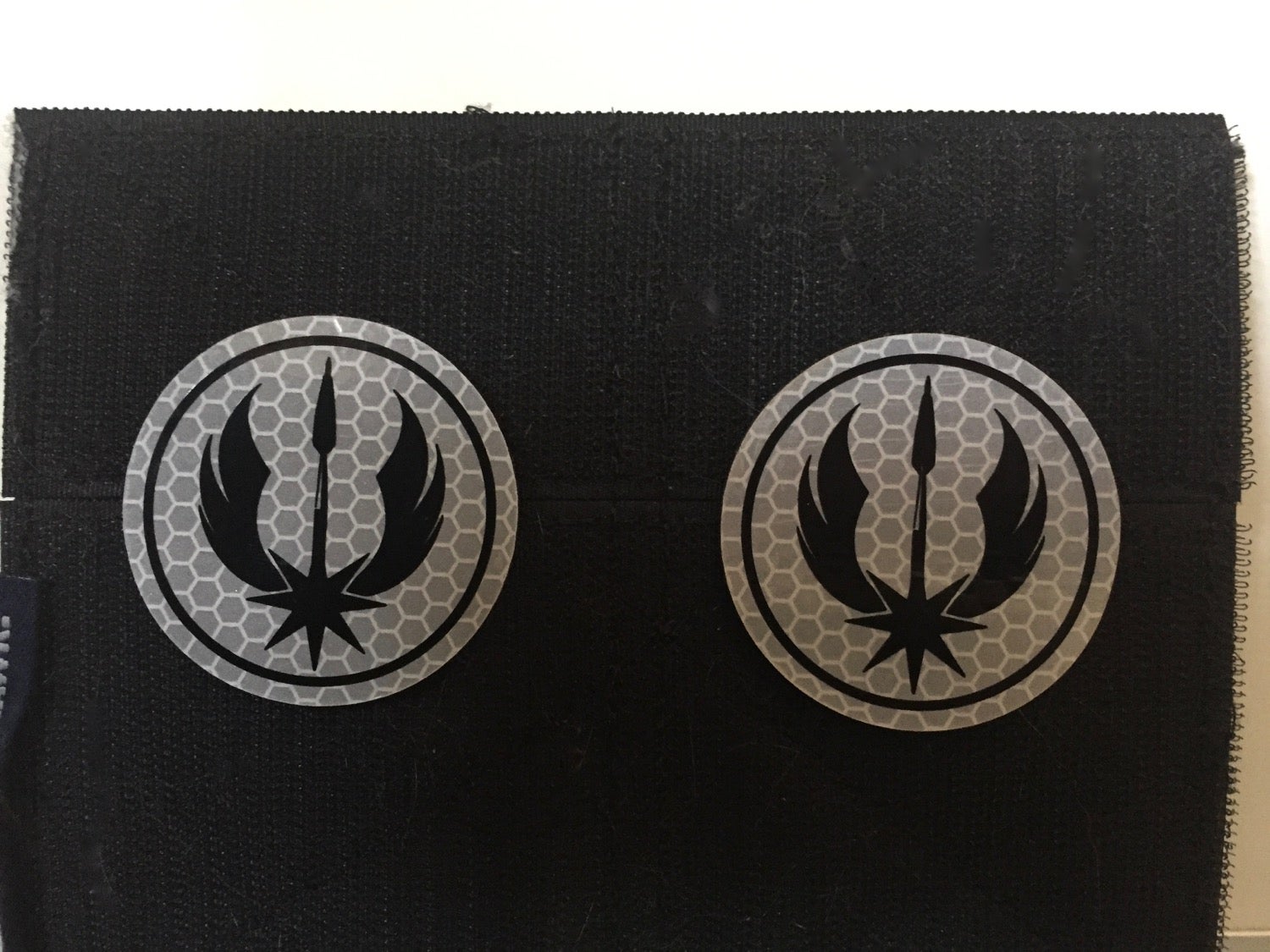
These reflective patches from Rogue Dynamics are the exact same size as the dots on the Dot Torture sheet I used. They were well picked up by all laser systems I used.
The intention was to shoot the dot torture drill four times a day, which would be the equivalent of 200 rounds per day (which is twice what I asserted I would like to do with live rounds). I allotted thirty total minutes for training.
Midway through the training period, I was contacted by Philip at Salted Earth, and was able to meet up with him to acquire a couple of Atlas demo units. While I had the Atlas units, I dropped my repetitions of the Dot Torture to three, and kept my overall time (of thirty minutes) as a boundary.
Also, during the training period, I planned to not fire any live rounds. Which also worked out since I was traveling a bunch during the period.
Since this article went pretty long, we’ve broken it into two parts. Stand by for Part 2 of this article where I will go over my observations and the ultimate results…
 Your Privacy Choices
Your Privacy Choices
